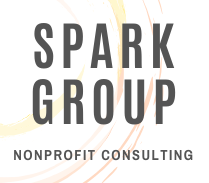Utilizing Best Practices for Program Design
I like to think of myself as a creative, innovative individual, and often pride myself on my ability to come up with (what I consider to be) great new ideas! So -- full disclosure -- the first time I heard the advice I’m going to share with you today, it was somewhat of a hard pill to swallow.
Utilize existing best practices for Program Design. Funders don’t typically want to see how innovative and creative your new program ideas are; they want to know their money is being invested in proven methods, upholding any industry standards.
In her starter kit on “Conducting Best and Current Practices Research,” Ophelia Eglene shares this insight: “For every innovative idea in your organization, you can be almost certain there is a kindred idea, and some relevant experience, somewhere else. Knowing about, understanding, and learning from these related endeavors can give you a head start on your own initiative.”
Step One in Program Design: Research
When faced with a program design challenge, first and foremost: research current and best practices. Don’t try to reinvent the wheel; learn from the experiences of others. Investing the time to gain insight on what has worked well for others faced with a similar situation can clue you into underlying causes, possible strategies, and potential problems you might have otherwise overlooked.
Unfortunately, when it comes to program design, many organizations skip this crucial research component. Eglene makes note of some of the very common “false assumptions” organizations make about their work.
• There is no agency anywhere in the world like mine.
• This problem is totally unique and historically unprecedented.
• There is only one way to deal with this problem.
• We know more about this problem than anyone else
While it’s easy to get caught up in this kind of exceptionalist thinking, it’s important to take a step back and remember: Success in the nonprofit world so often stems from great collaborations, sharing ideas and inspiration.
What is Current and Best Practice Research?
Simply put, “Research into current practice is an organized attempt to learn from the experience of others” (Eglene, 2000). A best practice is a method or technique that has been generally accepted as superior to any alternatives because it produces results that are superior to those achieved by other means, or because it has become a standard way of doing things (e.g., a standard way of complying with legal, ethical, or program standards requirements).
No matter the challenge or obstacle you’re facing, chances are good that someone, somewhere has faced that same obstacle – or one very similar. Therefore identifying and evaluating the solutions developed by other organizations is a crucial step in project planning and program development.
These experiences can provide invaluable insight into what does or does not work, while you’re in the earliest stages of program development. Zero in on effective practices – what we mean by ‘best practices’ – and look deeper into the characteristics of the program or project that led to success
Though don’t forget to look at those not-so-successful examples, too. Similarly, a lot can be learned from taking a deeper look into the characteristics of the program that didn’t work out so well, so you can avoid making the same mistakes.
Best Practice Research Improves Your Chances for Funding
Not only will doing your research and learning from others make your job so much easier, but it can also increase your chances of receiving funding. Funders like to put their money into programs with a proven track record of success, and they often look to be assured that any established standards are being met.
Where to Research Best Practices
Don’t just research using the internet; consider your networks as well. Take a few minutes to consider the people in your professional and personal networks. Think of conferences you've attended, contacts you’ve made – in ‘real life’ or on social media. Reach out to those people you think may have some good insight, or may be able to direct you to someone else who does.
Libraries, professional organizations, local colleges and universities, and government organizations are other places you can turn to.
Need some help? Spark Group can help with the best practice research and program design process.
⭐ Join our weekly newsletter where we share tons of exclusive tips, tools, grant opportunities, and resources to our subscribers. Subscribe on the Spark Group home page.
Further Resources
“Conducting Best and Current Practices Research: A Starter Kit.” Center for Technology in Government. 2000. https://www.ctg.albany.edu/media/pubs/pdfs/conducting_best.pdf)
Community Toolbox: Promoting the Adoption and Use of Best Practices. University of Kansas. https://ctb.ku.edu/en/table-of-contents/analyze/choose-and-adapt-community-interventions/using-best-practices/main




